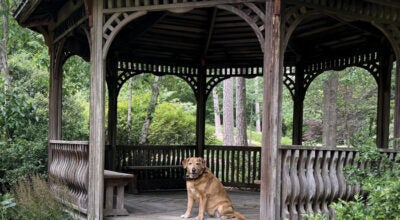Asleep on the job – and proud of it (sort of)
Published 12:00 am Tuesday, July 15, 2008
By Laura Sessions Stepp
The Washington Post
Sometimes in life it’s best to come clean about something you’ve hidden from all but your closest friends. So here goes: I nap at work.
Not every day, not even every week. But once in a while, especially when I’m stuck in the middle of writing a long feature, I’ll slip downstairs to The Post’s health center for a 20-minute snooze.
I didn’t know anyone else in the newsroom napped there until a colleague revealed at a recent staff meeting that he did. As our co-workers raised amused eyebrows, I couldn’t let him hang out there alone. High time, I thought, for us to let the rest of the world in on an easy way to reduce workplace irritation and improve performance.
So I announced my secret little pleasure, at which point my boss cheerily agreed not to fire me ó as long as I would come out of the closet and write this article.
There’s little dispute that Americans are sleep-deprived, and our bodies know it. As our circadian rhythms decline midday, some of us have little choice but to doze.
In the 1700s, essayist Samuel Johnson said one doesn’t take a nap, a nap takes you, wherever you happen to be.
A cup of coffee rarely helps. Neither does a Hershey bar or computer solitaire. A brisk walk outside provides a momentary boost, but nothing is as immediately restorative as the nap.
I used to tell myself, when infected by the sleep bug on a deadline day, that I couldn’t afford the time. I learned that that is precisely the moment when I should give in.
The first person I saw slumbering at work, years ago, was an editorial page editor at another newspaper. This man, in his mid-40s, would close the door to his glassed-in office, lie down on the floor, put his feet up on a chair or couch, and fall promptly asleep. Sometimes he closed the curtains to his office, and sometimes he didn’t. My pals and I would take turns sauntering by to sneak peeks.
The editor told us he was lying down in the afternoon because he had a bad back. “Yeah, right,” we thought. But years later, that was what I told the nurses who ran our health center after I had back surgery.
I kept returning to lie down even after my lumbar vertebrae healed ó and the nurses never said a thing. One sweetheart even offered occasionally to spread a blanket over me.
At one point, the nurses started requiring visitors to sign a log and state their reason for the visit. I panicked. How could I comply and keep my secret safe? I compromised, writing in my name but not the rationale.
A researcher at Boston University says 70 percent of workers nap on the job ó and some feel they have to hide in bathrooms or stairwells to do so. They are probably correct: Snoozing may enhance recall and boost creativity, but it does not exactly improve one’s chances for a promotion.
There are, however, encouraging signs of change.
Google offers quiet spaces called “nap pods.” Pizza Hut International allows employees to nap on their breaks. Even washingtonpost.com, our sister company, has a nap room, although I’m told no one has ever seen anyone napping there.
The Post infirmary has only two tiny rooms, each with a twin bed, one or both of which can be occupied at any given time by someone who is actually infirm.
Which leads me to the only reason I could think of NOT to write this story. Once word about this little sleep hideaway gets out, my colleague and I may have to stand in line to take naps.
What have I done?
AP-NY-04-29-08 1238EDT



